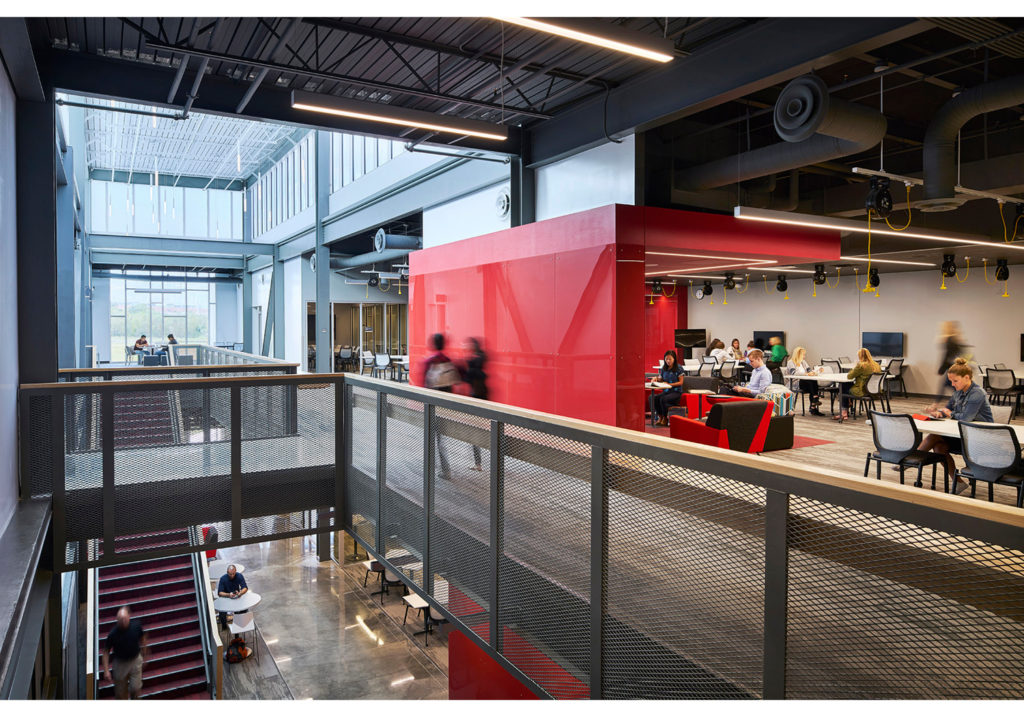
Reports from the LSC National Colloquium
Kansas City Airport Marriott and Missouri Innovation Campus
The 2019 LSC National Colloquium focused on these three themes.
- The experience of all 21st century learners/users
- Planning for assessing 21st century ecosystems for learning
- Permeability: Focusing on the future of 21st century learners & learning spaces
In formal and informal settings, participants from campuses and design firms shared what is known and what we are learning from theory, research, and practice about how spaces matter to the experience of each learner, how spaces serve institutional goals for inclusivity and equity. (Friday)
Informed by stories from the field presented through case studies, empirical research, and poster sessions, the colloquium conversations examined what we know and what we are learning from theory and practice about questions that matter in the process of imagining and realizing spaces as ecosystems for learning. (Saturday)
Exploring the concept of permeability as means for embracing the future of planning for assessing 21st century learning spaces. (Sunday)
GOAL:
All participants return to their home communities of practice with a report and an agenda for action. These will bring attention to colloquium discussions about:
- Current findings—from research and practice on how learners experience space, how space influences learning–that inform the process of planning
- Examples from a diversity of recent facilities projects about how planning spaces that work happens, becomes embraced by the community, enhances institutional distinction into the future
- Emerging “pushing the envelope questions” being asked on campuses giving attention to the present and future of their intellectual, social, and physical environments for learning.
Agendas for action reflect the institutional context for focusing on spaces for learning.
Designed for campuses:
- anticipating a major facilities project within the next seven years
- engaged in a campus-wide initiative of repurposing current spaces
- re-examining if and how spaces serve institutional goals for inclusivity
- looking for real-world of examples of best practices in planning from seasoned academics and design professionals.
LEARNING OUTCOMES
That all participants leave with a deeper understanding about what we know and what we need to know about:
- How to shape a shared language and vision within a campus community about why spaces matter— to learners today and into the future, to the institution today and into the future; how to make the case to colleagues and clients.
- How to examine campus culture for planning and assessing spaces that reflect that language and vision; how to identify and assess institutional assets (people, programs, places) relevant to realizing spaces that matter.
- How to create and nurture a community with a shared commitment to incorporating attention to inclusivity—spaces serving all students, ecosystems—every space a learning space, and permeability—as a lens through which to design holistically.
- How to incorporate attention to how institutional operations, programmatic initiatives, and how student successes are influenced by planning that embraces the future.
LSC COLLOQUIUM OPENING PLENARY
Two Perspectives on the Process of Planning
- A Checklist: What to Do Before Starting Formal Planning
Laura Malinin, Inaugural Director, Nancy Richardson Design Center, Associate Professor of Interior Architecture + Design – Colorado State University
(full paper)
- The Interdisciplinary Life Sciences Building (ILSB)
William LaCourse, Dean of the College of Natural and Mathematical Sciences – University of Maryland Baltimore County
Malinin and LaCourse shared their individual stories of imagining and realizing spaces for quite diverse communities of learners, beginning with focusing on the experience of the learner.
These were two quite different spatial types, yet they had a common goal: to enable interdisciplinary, engaged and applied learning, inspire innovation and creativity. Each story illustrates the complexity and iterative nature of planning—toward the end that the project is embraced by the campus community, focuses on the future, and enhances institutional distinction.
